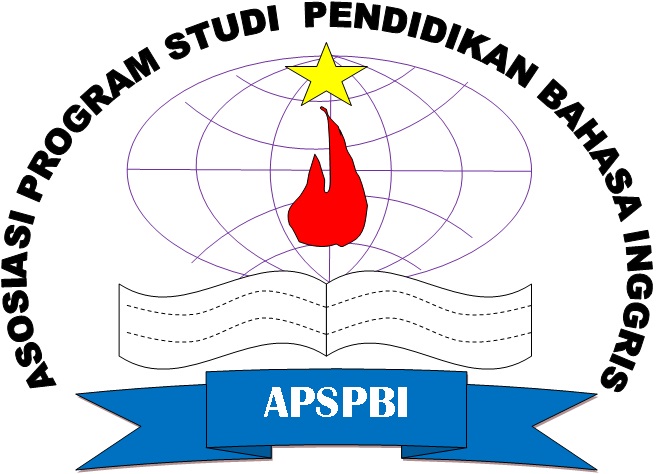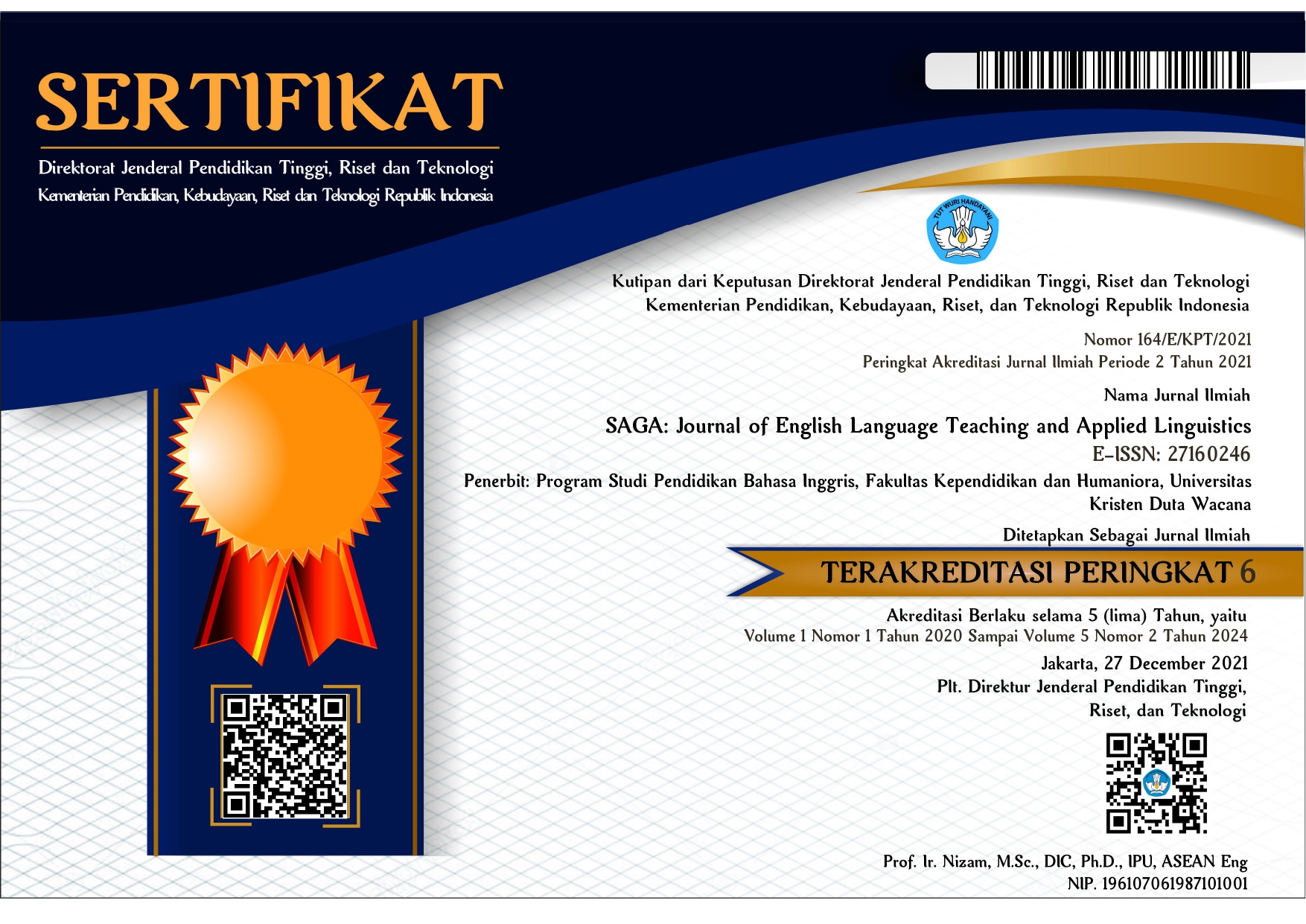Movie Discussion Club: A Teaching Model to Improve Integrated Skills in English
DOI:
https://doi.org/10.21460/saga.2024.52.193Keywords:
teaching model, integrated skills in English, research and developmentAbstract
This research aimed to design and develop a teaching model following the need analysis which showed that the learners needed a set of instructional system to improve their integrated skills in English. Eighteen freshmen of English Literature Department (S1) and English Department (D3) from academic year 2019/2020 were participated as subjects in developing the teaching model. In conducting this research, there are seven steps in the procedure of research and development including: 1) need analysis and reference study, 2) developing product, 3) preliminary field testing, 4) first revision, 5) expert validation, 6) second revision, and 7) final product (first version). The instruments used to collect data are interview, observation, and questionnaire. The model was designed referring to six fundamental elements of teaching model namely focus, syntax, principle of reaction, social system, support system, and application context then implemented in Movie Discussion Club. The data of the field testing showed that the learners’ integrated skills improved. Later on, the researcher used the note from this stage to revise the product. Moreover, expert validators checked the product and gave suggestions to make last adjustment. The final product of the research is a revised design of teaching model applied in Movie Discussion Club.
References
Allan, M. (1985). Teaching English with Vvdeo. London: Longman.
Ary, D. et al. (2010). Introduction to research in education eighth edition. Canada: Nelson Education, Ltd.
Bastías, M. et al. (2011). Integration of the four skills of the English language and its influence on the performance of second grade high school students. Chile: Universidad Del Bio-Bio.
Borg, W. R. and Gall, M. D. (1983). Educational research: An introduction. Longman Inc.
Brown, H. D. (2001). Teaching by principles: An interactive approach language to language pedagogy. Pearson Education.
Brown, S. K. (2010). Popular films in the EFL classroom: Study of methodology. Procedia Social and Behavioral Sciences, 3, 45-54. https://doi.org/10.1016/j.sbspro.2010.07.011
Chuen, N.W. (2002). Film as a medium for improving EFL students’ English: A case study. The Chinese University of Hong Kong.
Cohen, L., Manion, L. & Morrison, K. (2007). Research methods in education (Sixth edition). Routledge.
Gustiani, S. (2019). Research and development (R&D) method as a model design in educational research and its alternatives. Holistics Journal, 11(2), 12-22. https://jurnal.polsri.ac.id/index.php/holistic/article/view/1849/892
Indah, N. (2018). Using small group discussion technique in teaching reading comprehension: A study at SMAN 1 Darul Makmur. Banda Aceh: Ar-Raniry State Islamic University.
Ismaili, M. (2013). The effectiveness of using movies in the EFL classroom: A study conducted at South East European University. MCSER-CEMAS-Sapienza University of Rome, Academic Journal of Interdisciplinary Studies, 2(4), 121-132.
Jalmav, H. G. F., & Subekti, A. S. (2022). Preparing Indonesian pre-service English teachers’ readiness to teach through teacher-themed movies. ELT Forum: Journal of English Language Teaching, 11(3), 179–190. https://doi.org/10.15294/elt.v11i3.59928
Joyce, B.R., Weil, M., & Calhoun, E. (2014). Models of teaching (9th edition). Pearson Education.
Kabooha, R. H. (2016). Using movies in EFL classrooms: A study conducted at the English Language Institute (ELI), King Abdul-Aziz University. Canadian Center of Science and Education, English Language Teaching, 9(3), 248-257. http://dx.doi.org/10.5539/elt.v9n3p248
King, J. (2002). Using DVD feature films in the EFL classroom. Computer Assisted Language Learning, 15(5), 509-523. https://doi.org/10.1076/call.15.5.509.13468
Lowe. (2009). Need analysis. http://www.scientificlanguage.com/esp/needanalysis.pdf
Oxford, R. 2001. Integrated Skills in the ESL/EFL Classroom. The Journal of TESOL France. Volume 8. Retrieved from https://www.tesol-france.org/uploaded_files/files/TESOL%20Vol%208%202001%20C1.pdf
Rahmat, A. (2017). Small group discussion strategy towards students’ reading comprehension of SMA Negeri 11 Bulukumba. Metathesis. 1(2), 18-44. http://dx.doi.org/10.31002/metathesis.v1i2.464
Ruusunen, V. (2011). Using movies in EFL teaching: The point of view of teachers. University of Jyväskylä.
Seeger, I. (2011). Exploring film as EFL coursebook supplements and motivational stimulus: A German secondary school case study. University of Birmingham.
Suratna, S. (2011). Efektivitas “Study Club” untuk mengembangkan kompetensi mahasiswa dalam rangka peningkatan mutu lulusan. Jurnal Administrasi Bisnis, 8(2), 1-20.
Tuncay, H. (2014). An integrated skills approach using feature movies in EFL at tertiary level. The Turkish Online Journal of Educational Technology, 13(1), 56-63. https://www.researchgate.net/publication/289752206_An_integrated_skills_approach_using_feature_movies_in_EFL_at_tertiary_level
Tnomat, D., Billik, M. O., & Banu, T. B. J. (2022). The implementation of short English movie to improve students’ vocabulary mastery in interpretive listening class. SAGA: Journal of English Language Teaching and Applied Linguistics, 3(1), 59–68. https://doi.org/10.21460/saga.2022.31.121
















